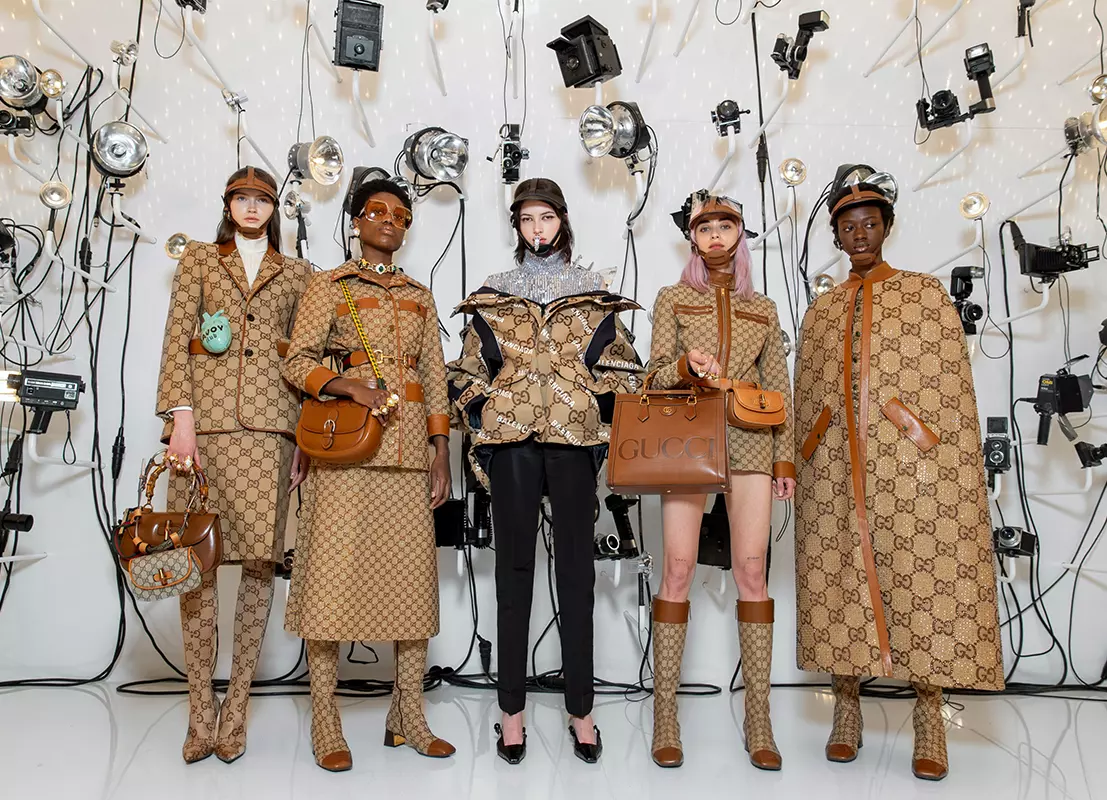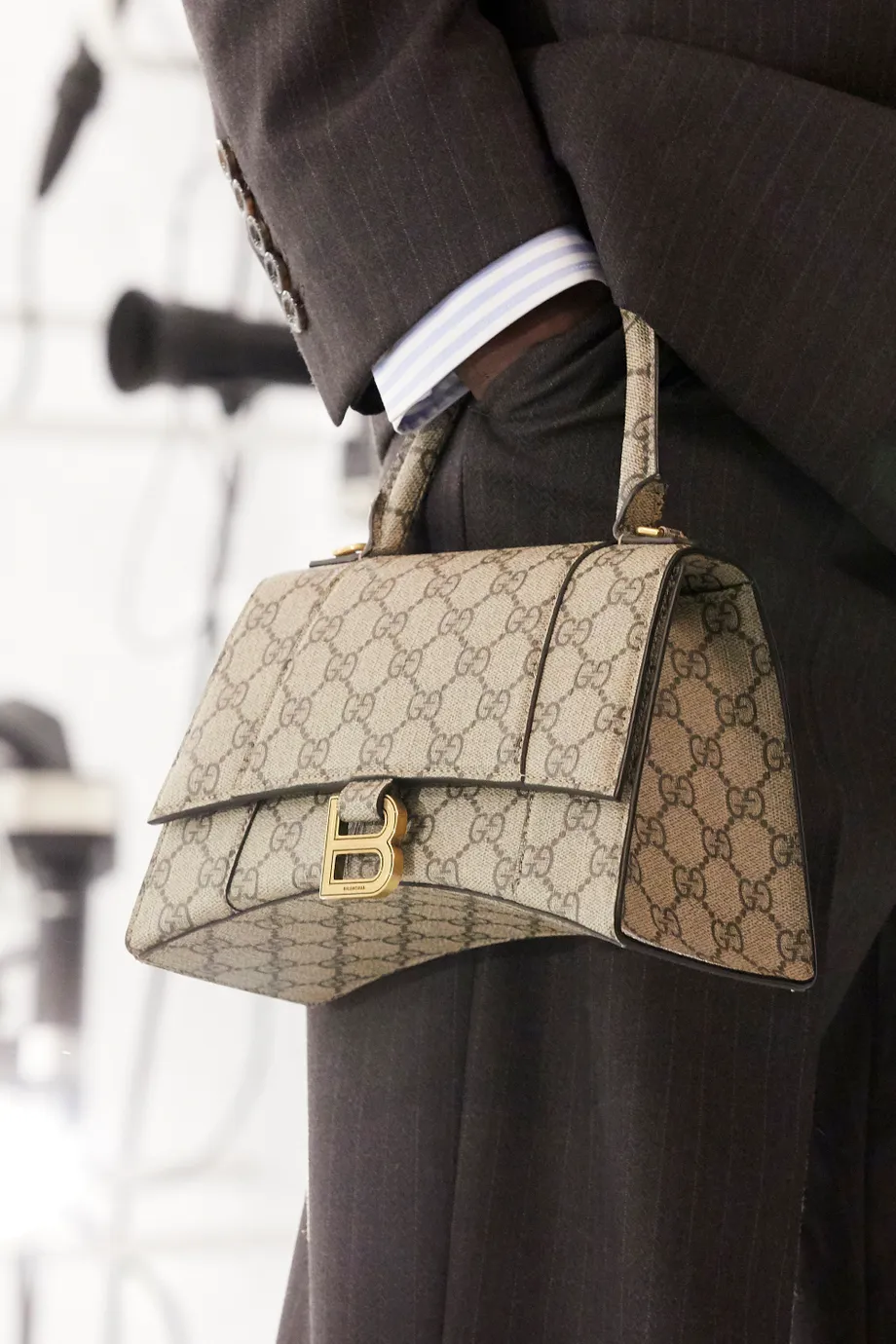The fashion world has always been energized by collaboration, but few partnerships have attracted as much attention as the creative exchange between Gucci and Balenciaga. These two iconic luxury houses, each with its own distinct identity, joined forces in a way that challenged expectations and reshaped the idea of designer cooperation. Instead of following a traditional partnership model, they presented a creative dialogue that blended their visual languages while still preserving the essence of each brand. The result was a cultural moment that resonated across the fashion landscape and signaled a new era for luxury design.
The collaboration first surfaced as part of Gucci’s celebration of its centenary, but its impact extended far beyond an anniversary event. It opened a conversation about how heritage labels can move forward in a rapidly changing world, showing that creativity thrives when boundaries are stretched. Both fashion houses demonstrated that even the most established brands can find renewed energy through experimentation, self reflection and shared artistic vision.
Reimagining Icons Through Creative Exchange
One of the most intriguing aspects of this collaboration was the way familiar emblems from both labels were transformed. Gucci, long known for its romantic and eclectic aesthetic, saw its pieces infused with the sharp attitude and modern spirit often associated with Balenciaga. At the same time Balenciaga’s original silhouettes gained a new sense of playfulness and ornamentation through the influence of Gucci’s visual direction. This reciprocal reinterpretation allowed each brand to showcase its own legacy while reflecting the style codes of the other.
The creative exchange was noticeable in everything from tailoring to accessories. The signature Balenciaga hourglass jacket appeared with Gucci inspired monogram print. Meanwhile Gucci’s famed bags and ready to wear pieces emerged with bold Balenciaga lettering and exaggerated proportions. This was not a simple logo swap. It was an inventive reworking of identity that highlighted how luxury design can evolve when two influential voices engage in conversation rather than competition.
This approach captured the attention of fashion critics and consumers alike. Many noted the fresh tension between precision and exuberance, refinement and rebellious energy. The collection demonstrated that garments can become narratives, telling stories about heritage, innovation and the dynamic nature of modern style.

A Reflection of Cultural Shifts in Luxury Fashion
The Gucci and Balenciaga collaboration also reflected broader cultural movements within the luxury sector. Fashion houses today operate in an environment defined by speed, digital influence and a desire for novelty. In this climate, collaborations allow brands to spark excitement while deepening their relevance for new audiences. What made this partnership stand out was that it involved two giants of the same industry rather than a typical crossover between fashion and another artistic field. This decision challenged conventional practice and opened new possibilities for future alliances.
The project arrived at a moment when consumers were seeking originality and narrative depth in their purchases. Luxury is no longer only about exclusivity or traditional craftsmanship. It is also about storytelling, cultural resonance and emotional connection. The mutually reflective designs allowed buyers to engage with a collection that felt both familiar and refreshingly unpredictable. It gave them the opportunity to own something that represented a moment in fashion history, not merely another seasonal product.
In addition, the collaboration underscored a growing appetite for experimentation and boundary pushing within established houses. Both brands could easily have relied on their powerful legacies, but instead they embraced creativity that felt daring and self aware. This willingness to play with identity showed that even labels with deep roots can reinvent themselves without losing authenticity.
The move also resonated with younger generations who value artistic risk and cultural relevance. By presenting pieces that were bold, witty and visually striking, the collaboration reached audiences who see fashion as an expressive platform as much as a form of luxury.
Impact on the Future of Designer Collaborations
The influence of the Gucci and Balenciaga partnership extended beyond its immediate sales and marketing success. It raised questions about how luxury brands might work together in the future and challenged the traditional boundaries between fashion houses. Prior to this project, collaborations between major designers were considered rare and even unlikely. Yet this creative venture proved that unexpected partnerships can stimulate artistic innovation and capture public imagination.
The collaboration also encouraged conversations about collective creativity in an industry often defined by exclusivity and individual designer vision. Instead of positioning themselves as rivals, the two brands embraced the idea of shared expression. Their interaction suggested that the future of luxury might involve more open creative discourse rather than strict separation of identity. This does not mean every label will follow their example, but it has certainly expanded the possibilities for how fashion houses can coexist and evolve.
There was also a notable shift in how consumers perceive brand loyalty. Rather than expecting clean separation between labels, many buyers today welcome fluidity in style narratives. They appreciate that fashion can be both deeply rooted in tradition and flexible enough to merge diverse visual ideas. The Gucci and Balenciaga partnership tapped into this mindset, offering designs that balanced nostalgia with forward looking energy.

Moreover, the collaboration highlighted the power of storytelling as a driver of desirability. In an age where digital culture shapes trends at lightning speed, the most memorable creations often come with compelling context. By presenting a collection built on dialogue, reflection and reinterpretation, the two brands created a narrative that extended far beyond the garments themselves.
Conclusion
The collaboration between Gucci and Balenciaga stands as a landmark moment in modern luxury fashion. It showcased how two highly influential houses can merge their creative languages without losing their individuality. Through imaginative reinterpretation, cultural awareness and fearless experimentation, they produced a collection that captured global attention and redefined what a designer partnership can achieve.
This creative exchange reaffirmed that the fashion world thrives when it embraces bold ideas, challenges tradition and welcomes unexpected collaboration. Gucci and Balenciaga demonstrated that artistic innovation is strongest when it is shared, and their partnership will continue to serve as inspiration for designers, consumers and the industry at large.
Written by: Christine Daoud
Published on: 27th November 2025